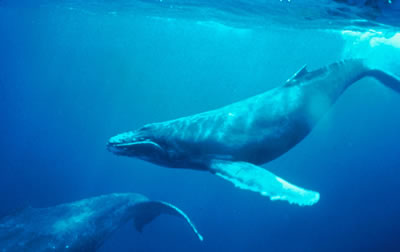Humpback whales near the Hawaiian Islands
Click on image for full size
Courtesy of NOAA
Life in the Open Ocean
The open ocean is the largest area of the marine ecosystem. It reaches from coasts to the middle of the ocean. The living things that survive in the open ocean need to have a way to float or swim in ocean water.†
At the top of the open ocean, sunlight shines through the water. This is where most life in the open ocean is found.
Some living things float or drift in ocean water. They are called plankton. They are moved around the open ocean by currents and wind.† Some plankton, like diatoms and other algae, do photosynthesis. They are the beginning of food chains. Other plankton are animals and one-celled protozoa that drift in the ocean water.
Many animals swim in the open ocean, including fish, whales, and sharks. Some fish swim in schools while others swim alone.† Some animals have other ways of moving through the water. Squid propel themselves through the ocean with a jet of water. Flying fish are able to glide just above the water surface using fins shaped like wings.
In the parts of the deep open ocean, too deep for sunlight to shine through, there are fish and other animals likegiant squid. Many animals living in the deep ocean get the food they need from the bodies of dead animals falling from the shallower water above.
Last modified June 1, 2010 by Lisa Gardiner.
You might also be interested in:
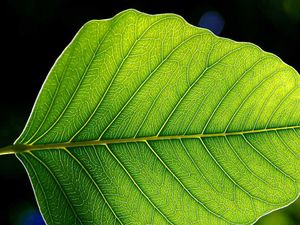
There are many different kinds of plants. Some have big leaves. Some have small leaves. Some even have flowers. All plants make their own food. When sunlight hits the leaves of a plant, photosynthesis
...more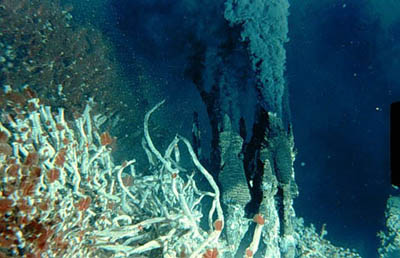
The deep ocean can be a difficult place to live.† The water is very cold and itís always dark there. Sunlight can not get down that far. Itís not always easy to find food. For some animals, food comes
...more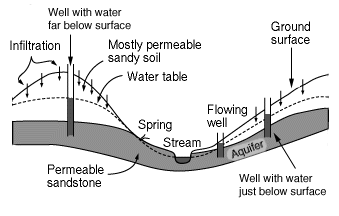
An aquifer is the name for a layer of rock which is capable of holding a large amount of water. Some layers are better at holding water than others, for example a layer of sandstone can hold a good deal
...more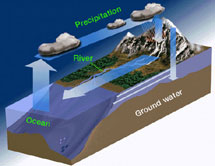
Limestone is an example of a carbonate. Other examples of carbonates include calcite, dolomite, and marble. Limestone dissolves easily in rainwater, especially rainwater which is loaded with carbonic acid.
...more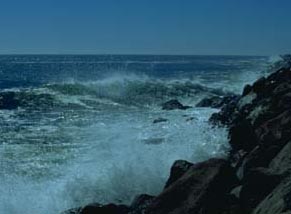
Have you ever left a glass of water out for a long time? Did you notice that the water disappears after a few days? That's because it evaporated! Evaporation is when water passes from a liquid to a gas.
...more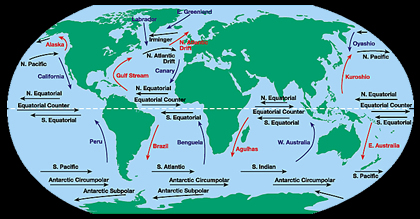
The water at the ocean surface is moved by powerful wind. The wind is able to move the top 400 meters of the ocean. This moving water is called surface ocean currents. Surface ocean currents form large
...more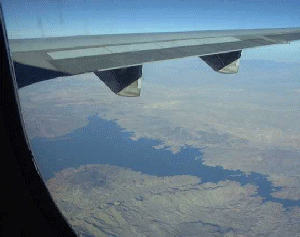
Rivers are very important to Earth because they are major forces that shape the landscape. Also, they provide transportation and water for drinking, washing and farming. Rivers can flow on land or underground
...more


